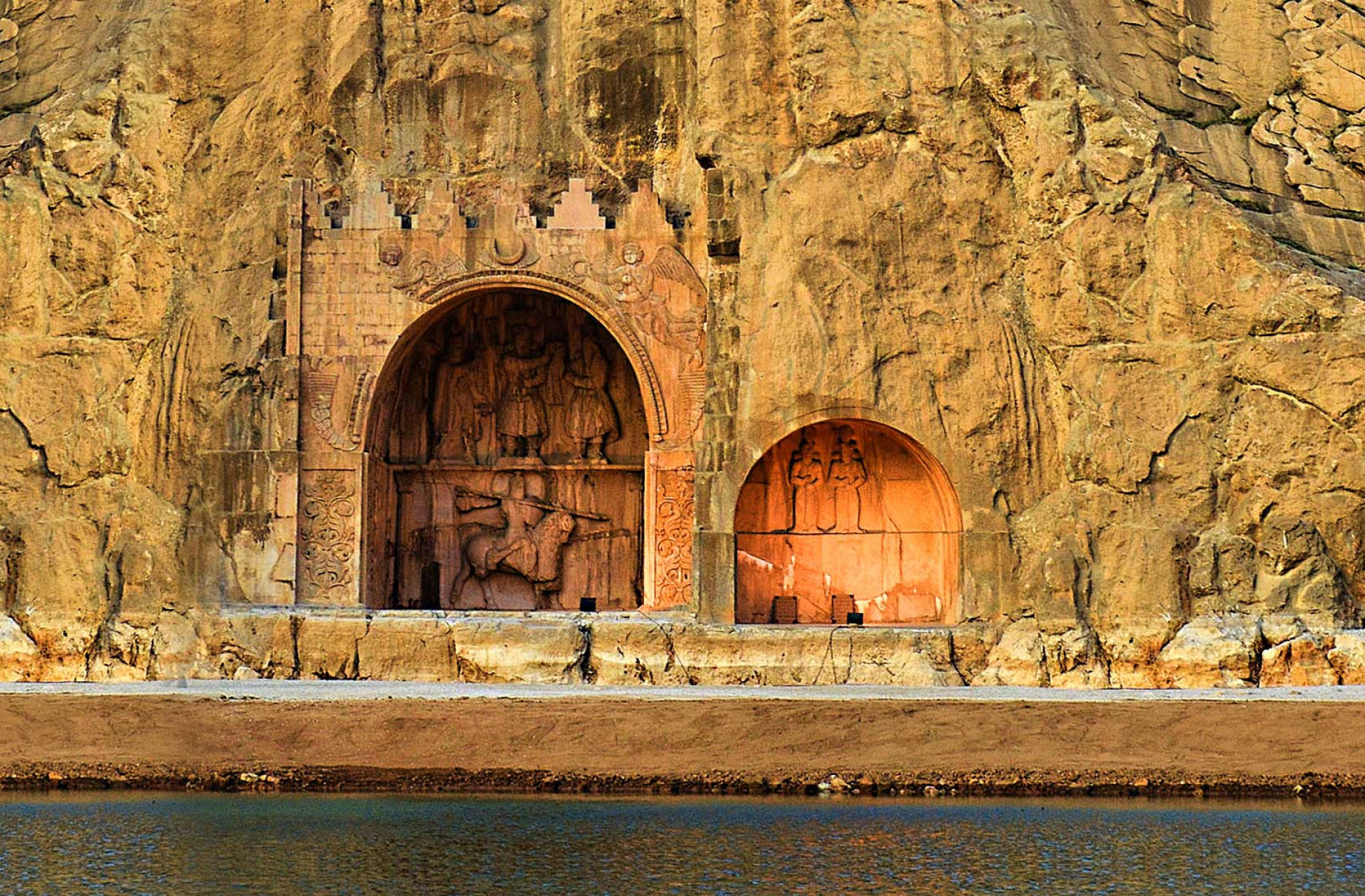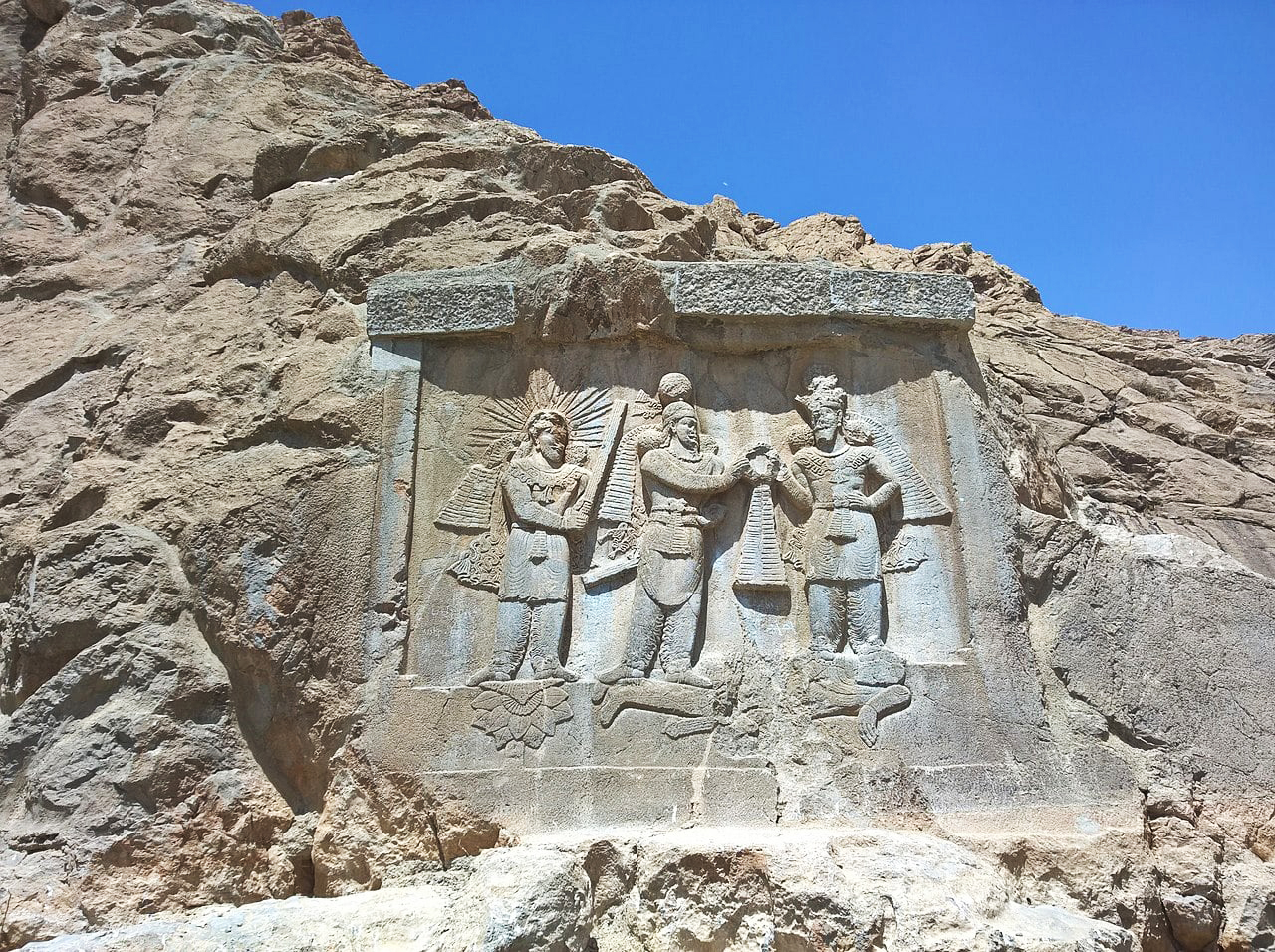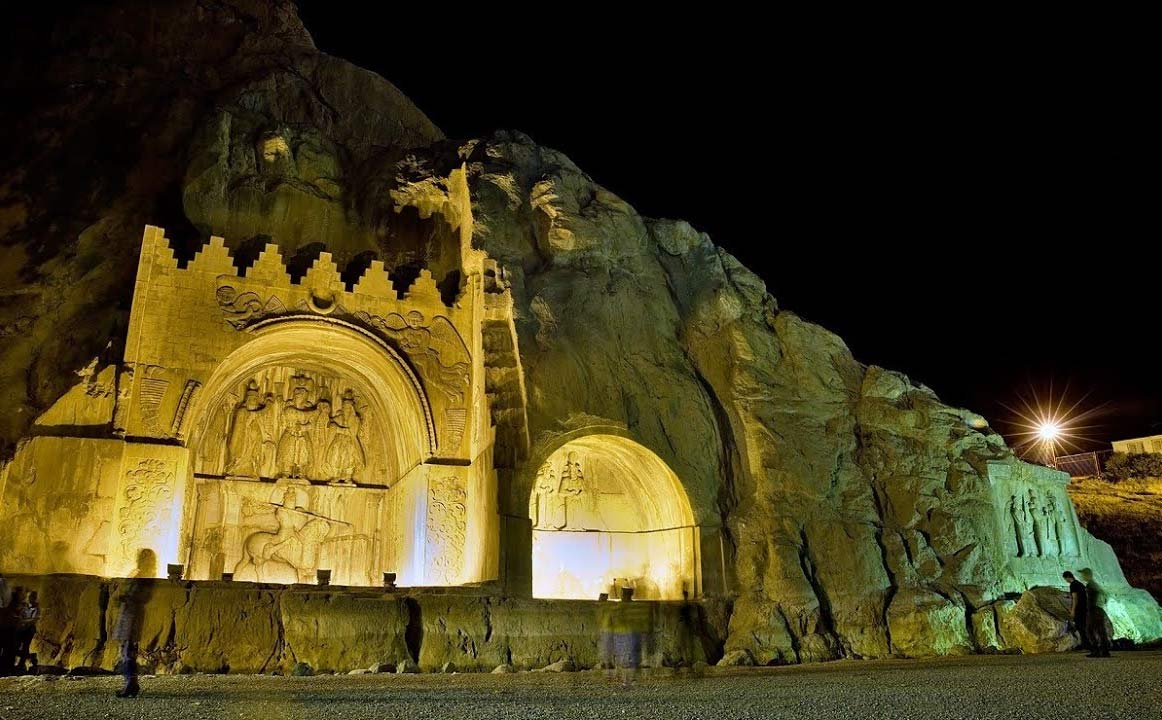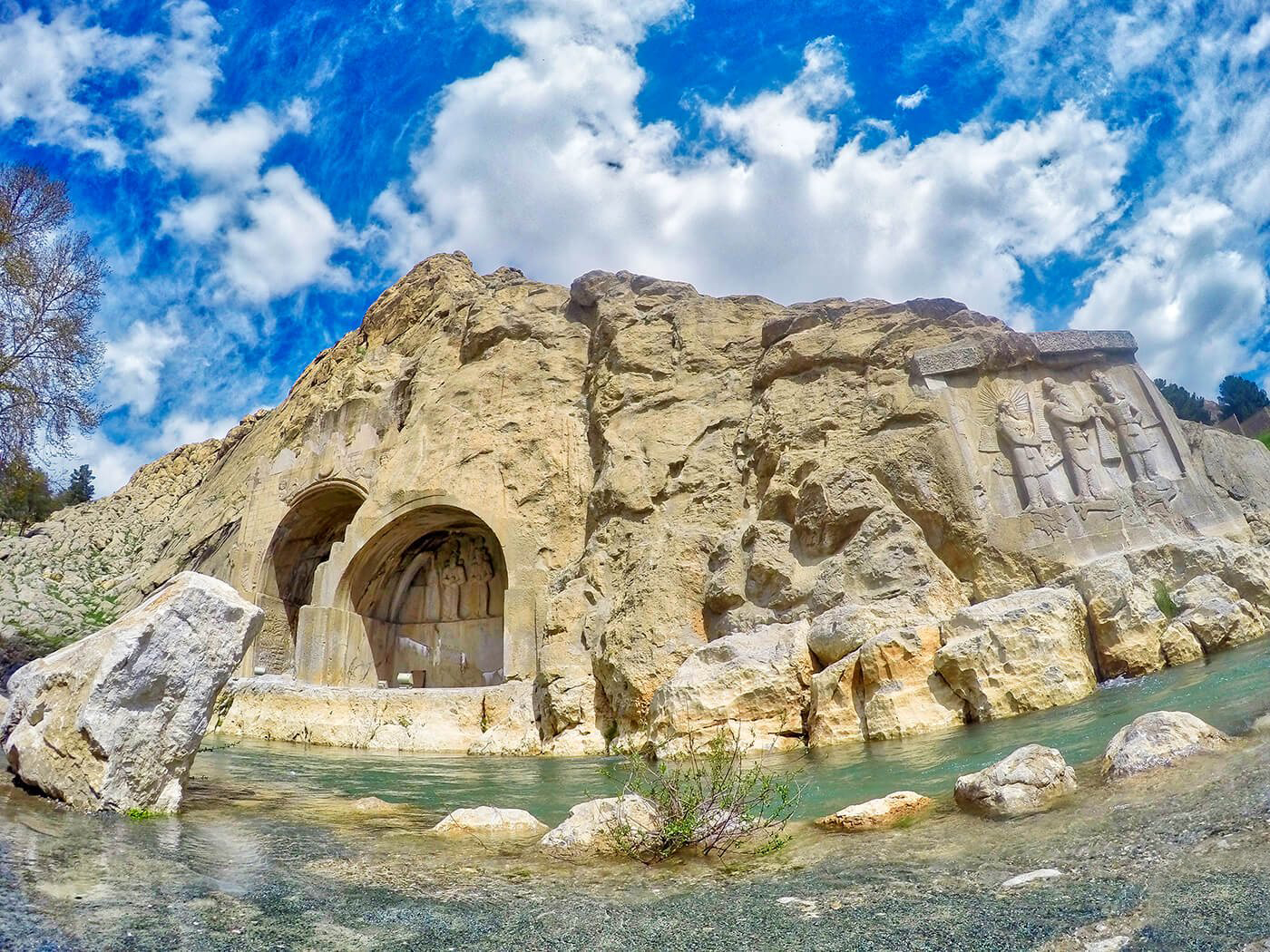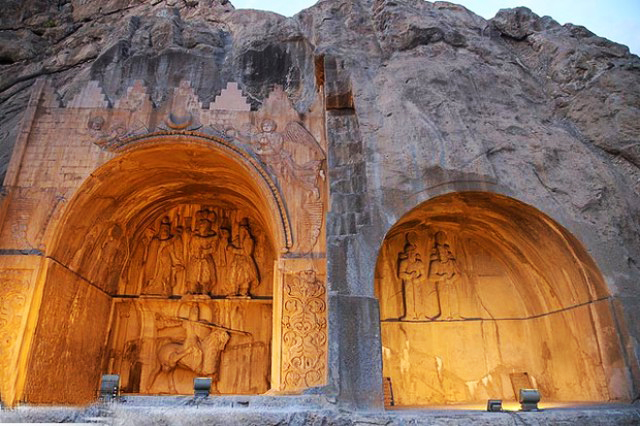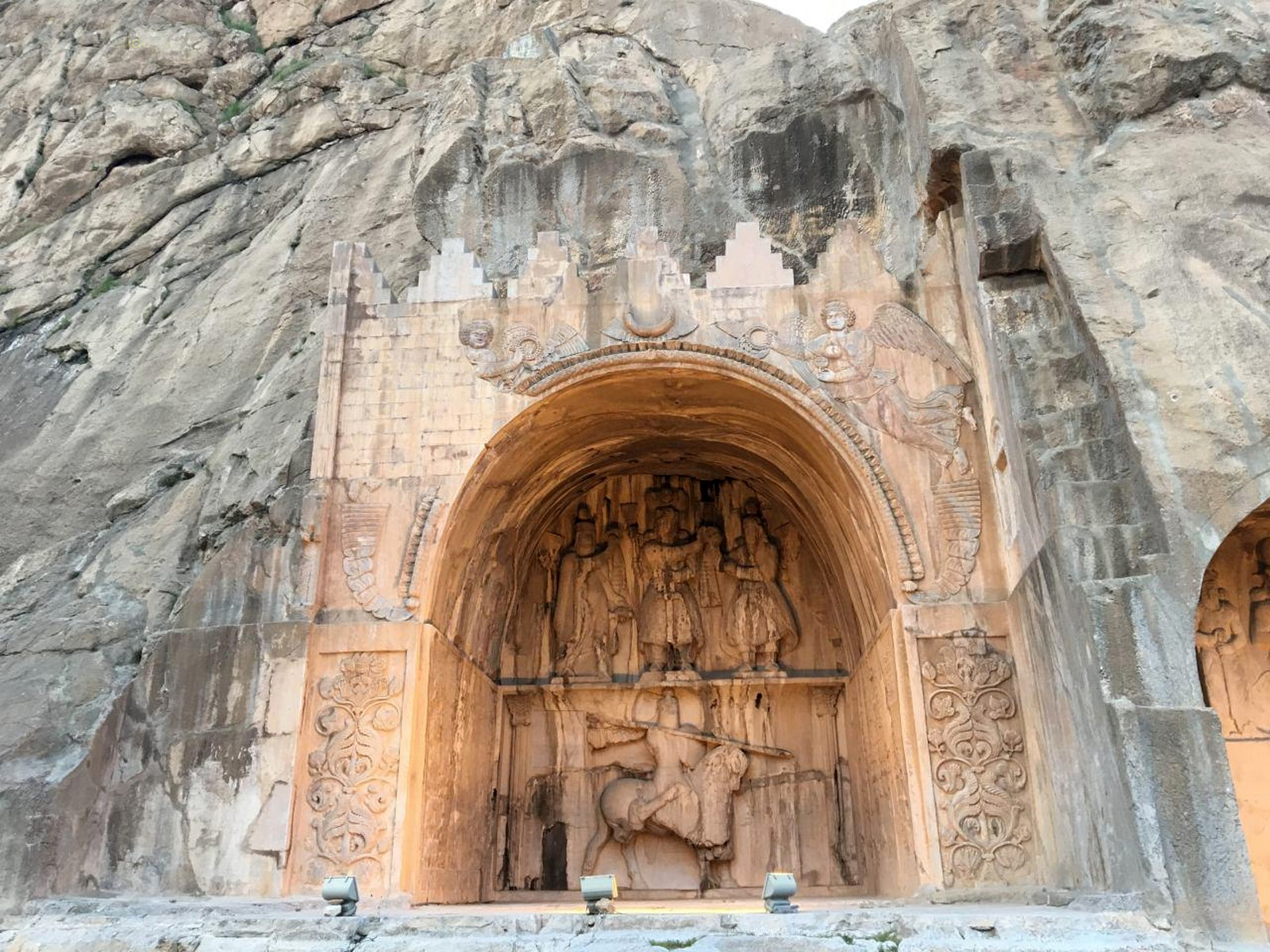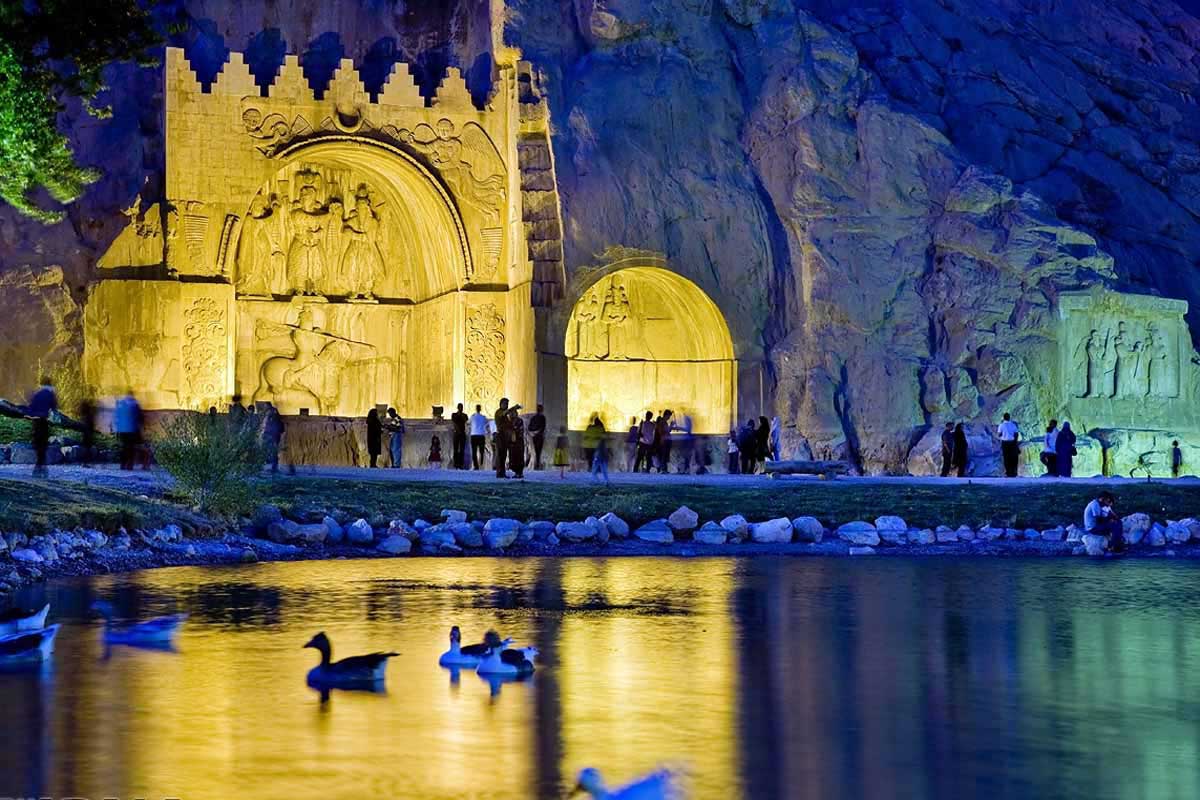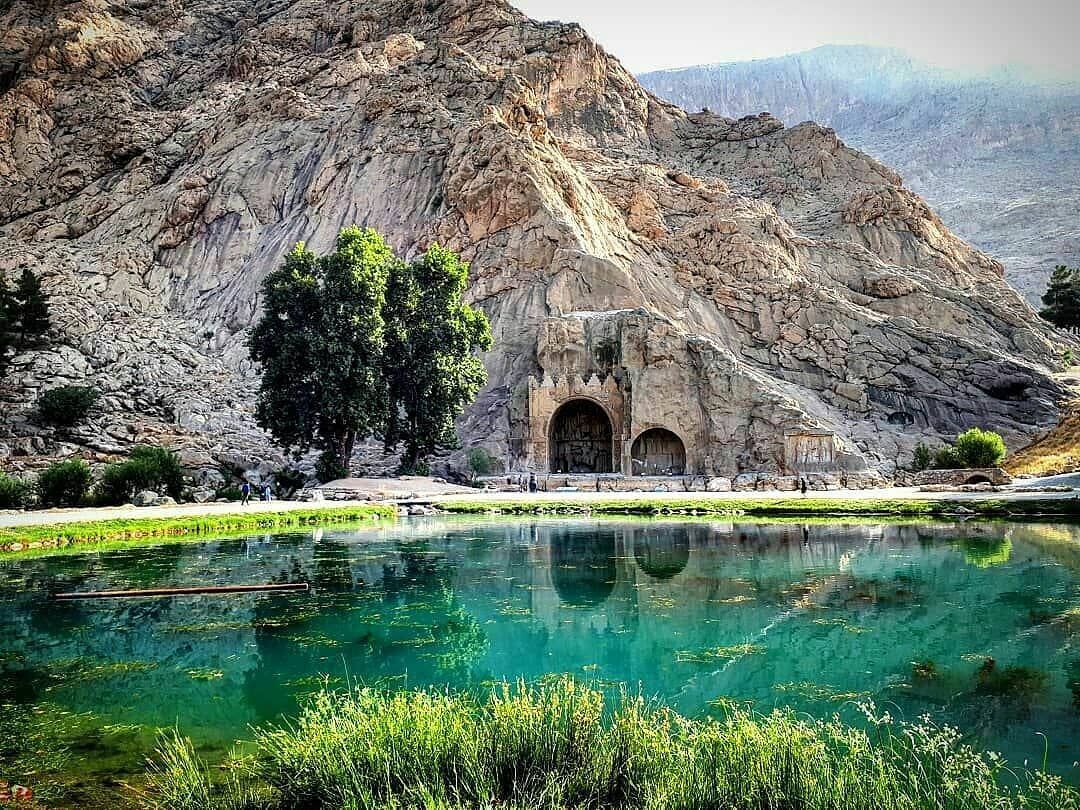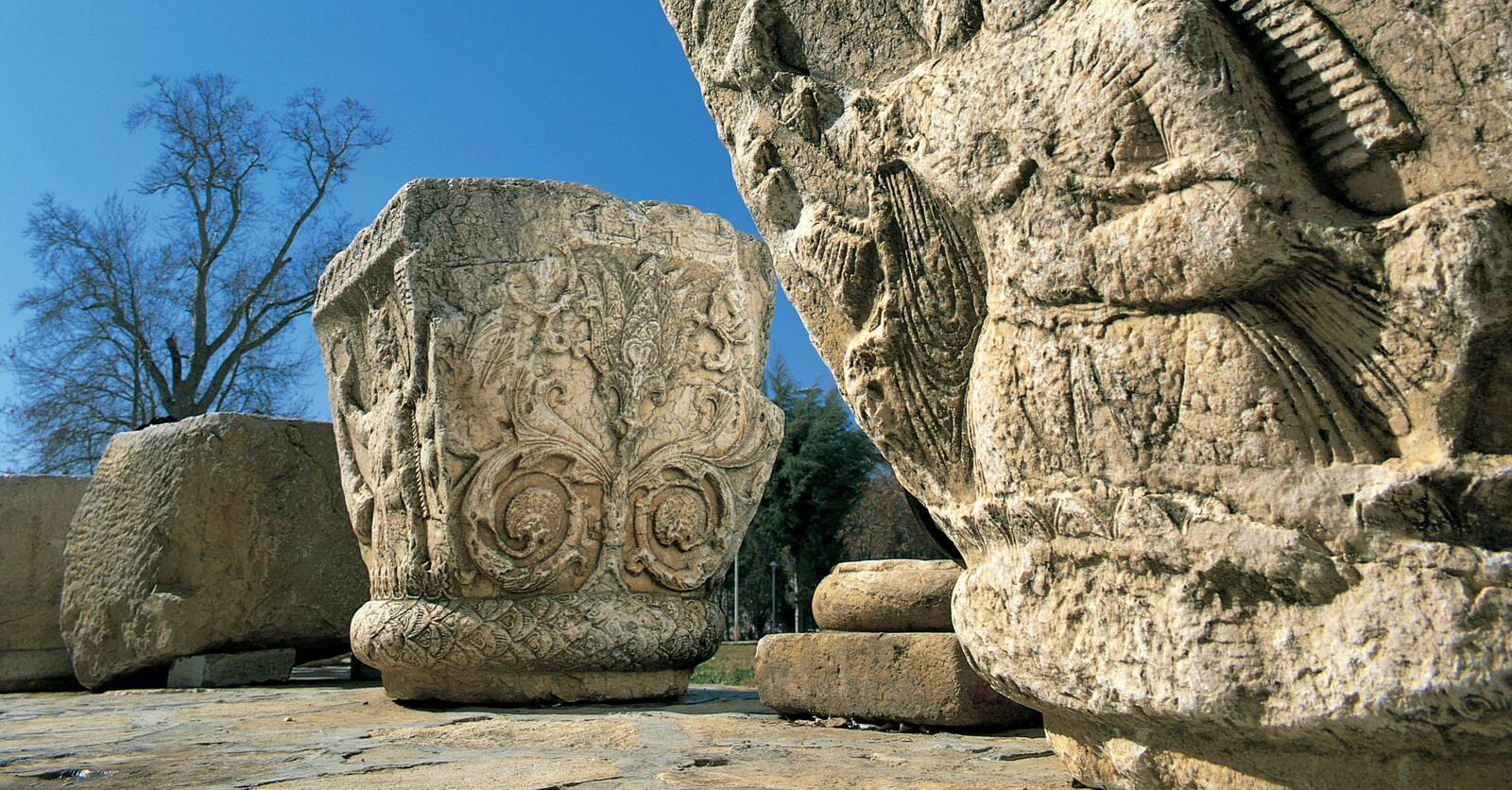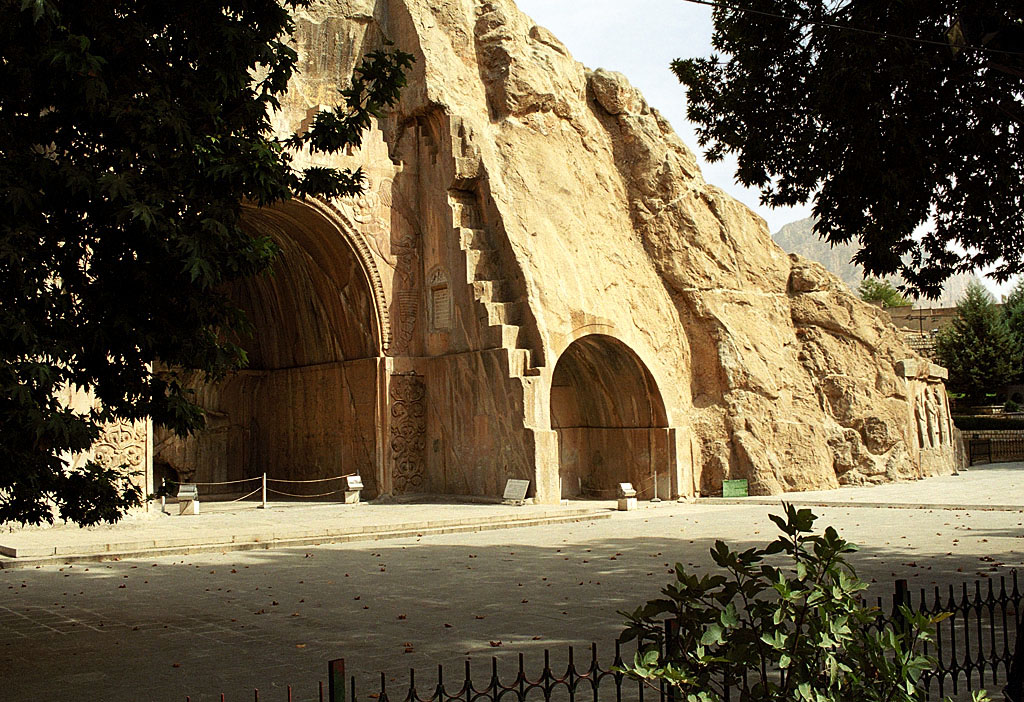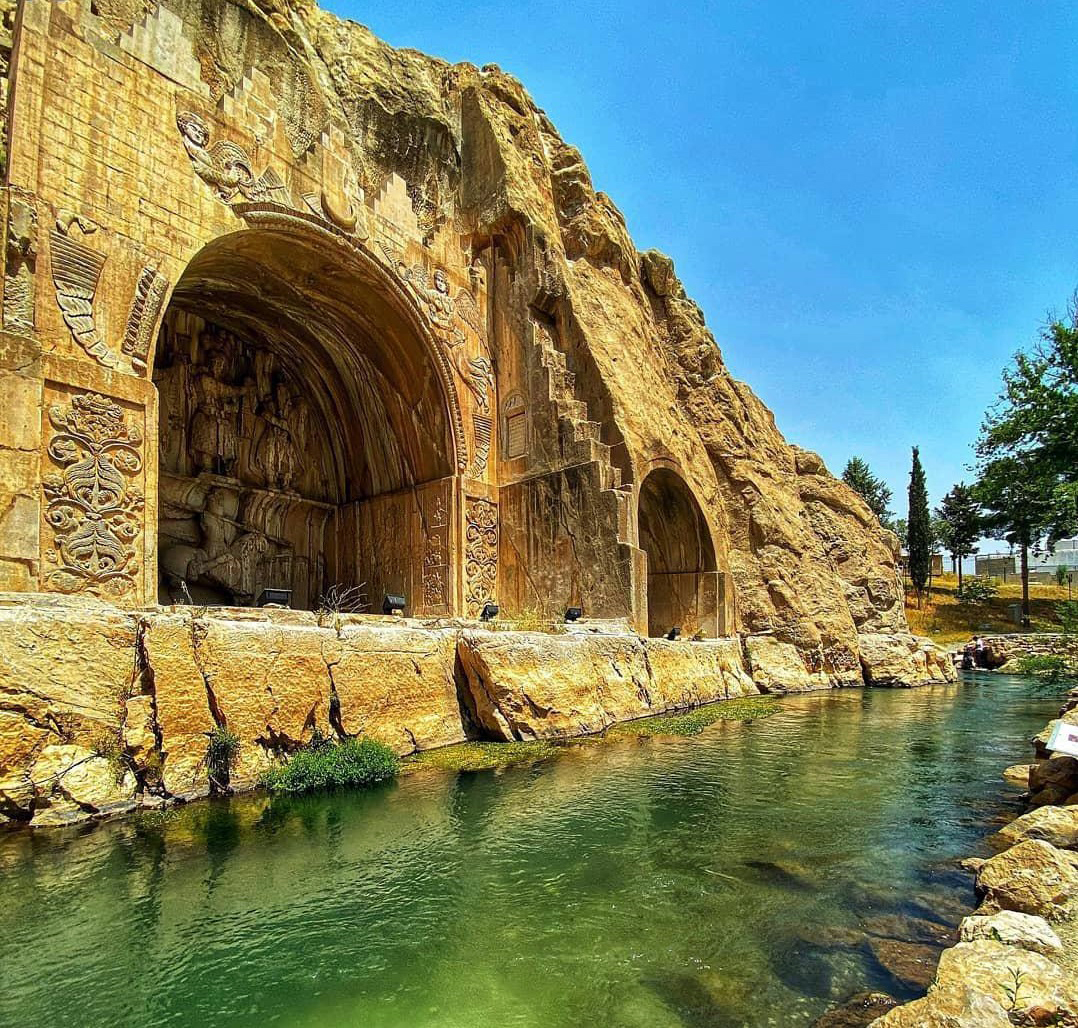Taq-e Bostan
Taq-e Bostan, or Takvasan, is a historical site with a series of large rock reliefs from the Sassanid era, which existed from 226 to 650. Translated as a “garden arch,” Taq-e Bostan is located 5 km northeast of the city of Kermanshah in western Iran in the middle of the Zagros Mountains and was part of this historical region.
The reliefs are some of the best and best-preserved examples of Sassanian art and include scenes of the investiture of Ardashir II, Shapur III, and Khosrow II. As in other Sassanid works, Taq-e Bostan’s images emphasize the power, religious tendencies, glory, honor, the greatness of the royal court, the spirit of battle and play, festivities, joy, and rejoicing.
The Sassanid kings chose a beautiful location for the reliefs along the historic Silk Road. The reliefs are located near a sacred spring that flows into a pool at the foot of the cliff. Taq-e Bostan, with its reliefs, is one of 30 Sassanid relics in the Zagros Mountains. According to Arthur Pope, founder of the Iranian Institute of Art and Archaeology in the United States, art was characteristic of the Iranian people and the gift they gave to all mankind.
Taq-e Bostan and its reliefs
Taq-e Bostan consists of large and small eyvans carved in the rock, with arched ceilings – the so-called eyvans – and a large relief. They illustrate the coronation ceremonies of Ardashir II and Shapur III as well as the hunting scenes of Khosrow II.
The coronation ceremony of Ardashir II
The first relief of Taq-e Bostan and apparently the oldest is a stone relief of the coronation ceremony of Ardashir II. It consists of four men with swords, helmets and lotus-cultured Iranians. The work is 4.07 m wide and 3.90 m high.
As you get closer, you can see how detailed the artists have worked. The figure on the right wears a jagged crown. It turns to the figure in the middle and holds out a royal ring to it. The figure in the middle is wearing a helmet. Both figures are wearing robes that cover their bodies up to their knees. On the left is a figure with a narthex on it’ s head and a sword in its hand. Its legs are noticeably smaller than the others. It wears exquisite and elegant shoes. Her small heels rest on a lotus, demonstrating the artist’s intention to create a soft and delicate base for the exquisite shoes.
Now the whole scene can be described as follows: Ardashir II in the center receives a ring from the god Ahura Mazda as a symbol of royalty. Behind Ardashir II stands Mitra, who protects Ardashir II in his deeds with her sword. Mitra is an ancient Iranian deity associated with friendliness, justice, harmony and sunlight. The leaning figure beneath Ardashir II is a defeated Roman, possibly Emperor Julian.
The coronation ceremony of Shapur III
The smaller eyvan contains two Pahlavi inscriptions and engravings of Shapur II or Shapur the Great and his son Shapur III looking at each other. The room of the smaller eyvan measures 6 × 5 × 3.6 meters. This eyvan is believed to have been built during the time of Shapur III. Some of them date back to 385 A.D. The Pahlavi inscriptions clearly indicate these two figures.
The translation of the inscription of Shapur II:
This is the figure of Mazda-worshipping Lord Shapur, the king of kings of Iran and Aniran, whose race is from the Gods. Son of Mazda-worshipping Lord Hormozd, the king of kings of Iran and Aniran, whose race is from the Gods, grandson of Lord Nersi, the Shahanshah (king of kings).
Translation of the inscription of Shapur III:
This is the figure of Mazda-worshipping Lord Shapur, the king of kings of Iran and Aniran, whose race is from the Gods. Son of Mazda-worshipping Lord Shapur, the king of kings of Iran and Aniran, whose race is from the Gods, grandson of Lord Hormozd, the king of kings.
The figures of the two kings are about 3 meters in height. Shapur II stands on the right and Shapur III stands on the left. Both hold a long sword pointing downwards. The right hand rests on the pommel and the left on the hilt. Both figures wear loose pants, necklaces, curly hair, and a goatee.
The coronation ceremony of Khosrow II
The front wall of the great Eyvan in Taq-e Bostan is divided into two parts. The upper part depicts the coronation ceremony of Khosrow II (591-628) and the lower part shows Khosrow II on horseback. In the center is Khosrow II, with Ahura Mazda on the left and Anahita on the right. Both gods are holding rings and the king is presented with one of the royal rings. One of the most impressive reliefs of the great Eyvan is the giant equestrian figure of King Khosrow II on his favorite warhorse, Shabdiz. Both are depicted in full armor. The horse’s image is 7.45 m wide and 4.25 m high. The exterior of the Eyvan is decorated with tree reliefs and angels. The tree symbolizes the tree of life or the sacred tree.
Boar and deer hunting scene
There are two hunting scenes on the side walls of the Eyvan. One scene shows the king hunting a boar and the other shows the king hunting a deer. From the time of Cyrus II until the end of the Sassanids, hunting was one of the favorite hobbies of the Iranian kings. Therefore, images of hunting are often found along with images of coronation ceremonies.
In the boar hunting scene, five elephants scare boars from a lake while the king waits with bow and arrow and female singers perform music for him. In the next scene, a boat carries female musicians playing horizontal angular harps, while the king’s boat shows the leading musician with a vertical angular harp (Persian chang). The king, aiming with bow and arrow, has just killed two large boars. In the next boat, the king stands with a halo around his head and a relaxed bow, a sign that the hunt is over. Below the image, elephants gather their loot and lay it on their backs. The picture is 6 meters wide and 4.25 meters high. This hunting scene is one of the most striking images ever immortalized in stone.
The deer hunting scene is 5.9 meters wide and 4.35 meters high. It shows Khosrow riding a flying gallop. A military band can be seen here.
An image of Mohammad Ali Mirza Dolatshah.
The Taq-e Bostan also contains a depiction done during the Qajar period, more than 1,300 years after the Sassanids. It depicts the eldest son of the Qajar king Fath Ali Shah, Mohammad Ali Mirza. The work is located on the side wall of the little Eyvan.

